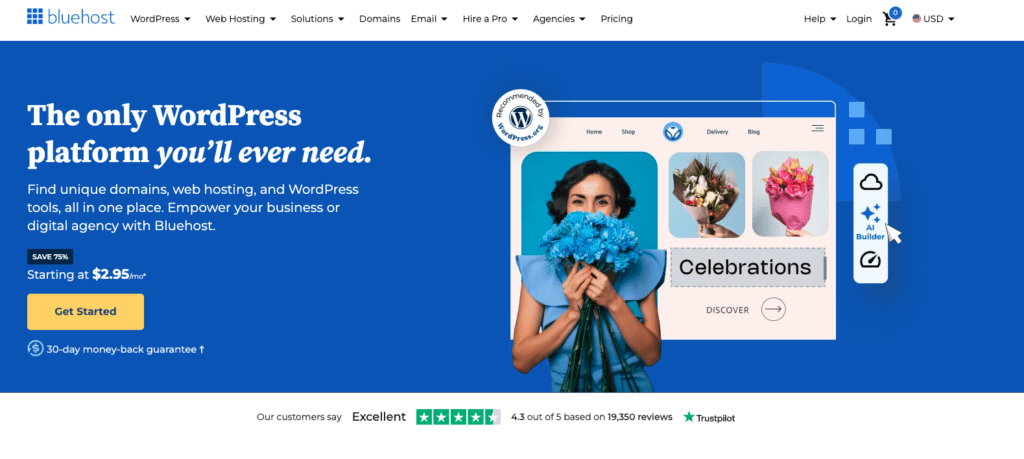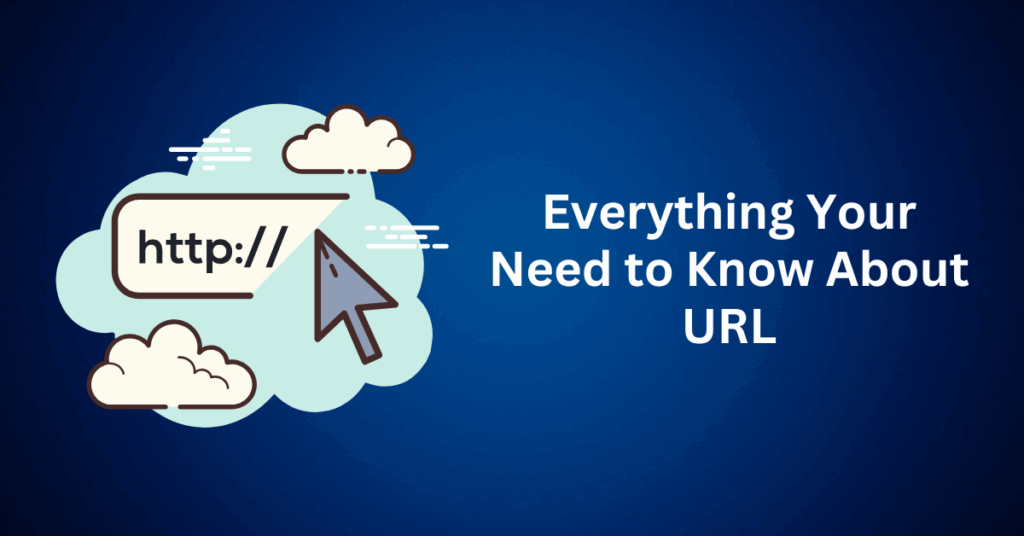Have you ever clicked a link and landed exactly where you intended? It was a blog post, an online store, or a video tutorial? That seamless experience is made possible by something we often take for granted: the URL.
In today’s digital world, understanding how URLs work isn’t just helpful, it’s essential for anyone building, managing, or simply navigating websites. From boosting your search engine visibility to enhancing user experience, the humble URL plays a bigger role than you might think.
Let’s start by answering the fundamental question…
What Is a URL, and Why Does It Matter?
A URL, which stands for Uniform Resource Locator, is the complete web address that directs your browser to a specific location on the internet, whether that’s a web page, an image, a file, or even a video. You can think of it like the GPS coordinates for digital content, guiding you precisely where you want to go online.

Whenever you type a web address into your browser or click on a link, you’re using a URL to access a particular resource on the internet. Without URLs, the web simply wouldn’t function in the way we’re used to.
However, a URL does more than just take you to a webpage. It also plays a significant role in several key areas. In terms of search engine optimization (SEO), clean and keyword-rich URLs help search engines better understand your content, which can improve your rankings. From a user experience perspective, a well-structured URL is easier to read, more clickable, and can boost trust and credibility. URLs also contribute to brand visibility. Customized, branded links make your content more memorable and shareable.
Whether you’re launching a new blog, setting up an eCommerce site, or optimizing existing content, mastering how URLs work is a crucial step toward building a successful online presence.
URL vs. Domain Name: What’s the Difference?
While often used interchangeably, URLs and domain names are not the same thing. Understanding the distinction is crucial when building or managing a website.
Here’s a quick comparison:
| Feature | URL | Domain Name |
| Definition | The full address of a specific resource | The central name that identifies a website |
| Includes | Protocol, subdomain, domain, path, parameters, etc. | Second-level and top-level domain (e.g., example.com) |
| Example | https://www.bennietay.com/blog/ | bennietay.com |
| Length | Typically longer, varies based on the page | Shorter and more static |
| Customizability | Highly customizable (paths, tags, slugs) | Customizable upon registration |
| Purpose | Directs to specific content | Represents the brand or homepage |
| SEO Role | Impacts rankings through structure and keywords | Helps with branding; minor SEO influence |
| Visibility | Shown in browser address bar for each page visited | Visible in URLs, ads, and mentions |
| Ownership | Not owned, just a formatted address | Purchased and owned via a registrar |
| Dependency | Built upon a domain name | Stands alone once registered |
| Management | Handled via hosting platform, CMS, or code | Managed through a domain registrar and DNS settings |
In short: the domain name is your site’s home address, while the URL is the specific route that takes users to different rooms (or pages) inside that home.
The Anatomy of a URL: Breaking Down Its Core Components
If you’ve ever wondered what goes into a URL, beyond just “www” and a domain name, you’re not alone. While URLs might seem simple on the surface, each part plays a distinct role in helping users and search engines find, interpret, and display the correct content on the web.
Whether you’re a website owner, marketer, or someone curious about how the web works, understanding the different parts of a URL can help you optimize your site for SEO, user experience, and performance.
Let’s take a closer look at what makes up a URL and why each element matters.
What Are the Parts of a URL?
A URL (Uniform Resource Locator) is made up of multiple components that work together to guide your browser to the right destination. Here’s a high-level breakdown:
| URL Part | Function | Example |
| Protocol | Defines how data is transmitted between browser and server | https:// |
| Subdomain | Routes to a specific section or category within a website | www, blog, shop |
| Domain Name | The registered address of a website | example.com |
| Path | Points to a specific page or file on the site | /about, /store/products |
| Parameters | Passes data to the server, often for filtering or tracking | ?id=1234&ref=newsletter |
| Fragment | Navigates to a specific section within a single page | #features, #contact-form |
Each of these elements contributes to how content is delivered and experienced on the web. Let’s explore them in detail.
1. Protocol (e.g., https://)
The protocol is the first part of a URL and defines how your browser communicates with the web server to retrieve content. It acts as the foundation for data exchange between your device and the website you’re visiting.
There are two common types of protocols you’ll encounter. The first is HTTP (Hypertext Transfer Protocol), which was the original standard for transmitting web content. The second is HTTPS (HTTP Secure), a more advanced and secure version that encrypts the data shared between your browser and the server.
Why does this matter? HTTPS is especially important for protecting sensitive information, such as credit card details or login credentials, making it essential for e-commerce websites and any page that handles personal data. Beyond security, HTTPS also offers an SEO advantage. Search engines like Google favor HTTPS-enabled sites in their rankings, giving them greater visibility in search results.
2. Subdomain (e.g., www. or blog.)
A subdomain is an optional prefix that appears before the main domain name in a URL. It helps organize and separate content on larger or more complex websites, functioning like a distinct subsection of the main site.
Some common examples include www., which is often used by default; blog., which separates blog content from the rest of the website; and shop., which typically directs users to an online storefront. Each of these subdomains serves a unique purpose while still being part of the same overall domain.
Subdomains matter because they can be used strategically for both SEO and branding. For instance, hosting your blog on blog.example.com allows you to create a focused content hub that can be optimized independently of your main site. This structure not only helps with organization but can also enhance user experience and improve search visibility.
3. Domain Name (e.g., example.com)
The domain name is the core identity of your website. The part that users remember and type into their browser’s address bar. It serves as your site’s digital address and is made up of two main components: the second-level domain (such as “example”) and the top-level domain or TLD (like “.com,” “.org,” or “.net”).

This combination forms a unique web address, such as example.com, that directs visitors to your site.
Why is the domain name so important? A strong, memorable domain builds trust with your audience, reinforces your brand, and is essential for establishing online ownership. To secure a domain, you purchase and manage it through a domain registrar, an accredited service that allows you to register your chosen name and keep control over it.
4. Path (e.g., /products/item1)
The path begins immediately after the domain name and tells the server which specific page or resource the user is requesting.
For instance:
- https://example.com/about-us points to the “About Us” page
- https://example.com/products/item1 shows a specific product page
Why it matters: Clean and descriptive paths help users understand what the page is about and improve SEO by including relevant keywords.
5. Query Parameters (e.g., ?id=1234)
Query parameters start with a question mark (?) and are used to send data to the server, commonly for tracking, filtering, or search purposes.
Example:
https://example.com/products?category=shoes&color=black
- category=shoes filters products by category
- color=black adds a color filter
Multiple parameters are separated by &.
Why it matters: Parameters are powerful tools for dynamic content and analytics. However, overusing them or having overly complex query strings can hurt SEO if not managed properly.
6. Fragment Identifier (e.g., #section1)
A fragment, also called an anchor, starts with a hash symbol (#) and links directly to a specific section within a page.
Example:
https://example.com/features#testimonials would take the user directly to the “Testimonials” section of the features page.
Why it matters: Fragments improve navigation, especially on long pages, and enhance user experience by enabling internal linking and quicker access to key content.
URL Syntax and Formatting: Best Practices for Clean, SEO-Friendly Links
Behind every clickable link is a URL that quietly does the heavy lifting, guiding users to the right page, helping search engines index content, and shaping how your site appears in search results. But not all URLs are created equal.

A well-formatted URL isn’t just a matter of technical hygiene. It plays a crucial role in your website’s credibility, usability, and search engine optimization (SEO). Whether you’re building a brand-new site or auditing your existing content, mastering URL syntax is essential.
Let’s explore the best practices for creating clean, reliable URLs that work seamlessly for users and search engines.
What Is URL Syntax?
URL syntax refers to the proper structure, format, and characters used in a web address. Adhering to these rules is essential for both usability and performance.
When a URL follows correct syntax, it becomes easier for users to read, understand, and remember. Clear and well-formatted URLs also tend to perform better in search engines, as they help search algorithms interpret the content and purpose of a page. Additionally, properly structured URLs are less likely to cause technical issues, such as broken links or server errors.
In short, clean URL syntax improves both user experience and site functionality.
Valid vs. Invalid URL Examples
To see how URL formatting affects functionality and readability, take a look at these side-by-side examples:
| Type | Example | Why It Works or Fails |
| Valid | https://www.bennietay.com/web-hosting | Clean structure, hyphens between words, all lowercase |
| Invalid | https://www.bennietay.com/Web Hosting & Plans | Contains spaces, capital letters, and special characters |
Even small formatting issues like an accidental space can cause your link to break or confuse search engines.
URL Formatting Rules Every Site Owner Should Follow
To create URLs that are functional, user-friendly, and optimized for SEO, follow these essential guidelines:
1. Use Safe, Web-Friendly Characters Only
Stick to:
- Lowercase letters (a–z)
- Numbers (0–9)
- Hyphens (-) to separate words
- Periods (.) when needed (typically in file names or extensions)
Avoid:
- Spaces
- Underscores (_)
- Special characters like &, %, @, or !
These can cause encoding issues or break your links entirely. For example:
✅ https://example.com/seo-best-practices
❌ https://example.com/SEO_Best Practices & Tips
2. Stick to Lowercase Letters
While domain names are case-insensitive, everything after the domain is case-sensitive. That means:
- /Blog and /blog are treated as different URLs
- Capital letters can create duplicate content or broken links
To stay consistent and error-free, always use lowercase letters in your URLs.
3. Always Include the Full Protocol (http:// or https://)
Whether you’re sharing a link on social media, building internal navigation, or adding a CTA button, always include the full URL, starting with http:// or https://.
Skipping the protocol can result in:
- Broken links
- Redirect errors
- Warnings on secure (HTTPS) websites
Tip: Use https:// whenever possible. It’s secure, trusted by users, and favoured by search engines.
4. Avoid Cluttered Query Parameters
Query parameters (like ?id=123&ref=google) are sometimes necessary for filters, tracking, or search results, but too many of them can:
- Make your URL hard to read
- Limit sharing and bookmarking
- Hurt SEO if not managed properly
Instead of:
https://example.com/products?page=2&id=892&ref=affiliate&utm_source=fb
Try:
https://example.com/products/winter-coats
Keep URLs clean and keyword-rich whenever possible.
5. Keep URLs Short, Descriptive, and Keyword-Focused
A concise, relevant URL is easier for users to understand and easier for search engines to index. Follow these tips:
- Include target keywords (e.g., /email-marketing-tips)
- Avoid filler words like “and,” “the,” or “of”
- Cut unnecessary folders or nested directories
🔍 Good URL: https://example.com/wordpress-hosting
🧭 Bad URL: https://example.com/categories/blog/2025/04/wordpress-hosting-article-1
Why Clean URL Structure Matters: Boosting SEO, User Experience & Brand Trust
Think of your website’s URL structure like the street signs of the internet. If they’re clear, consistent, and easy to follow, people (and search engines) can find their way without confusion. But if your URLs are messy or cryptic? You risk getting lost in the noise and losing traffic in the process.
A clean, well-organized URL is more than just a web address. It’s a powerful tool that supports your site’s visibility, trust, and overall performance.
Let’s break down why having a clean URL structure is essential for building a successful website in today’s competitive digital landscape.
1. Improves SEO and Search Visibility
Search engines thrive on clarity, and your URLs play a key role in helping them understand your website’s content. When URLs are short, well-structured, and include relevant keywords, they become easier for search engines like Google to crawl, categorize, and rank effectively.
Clean URLs offer several SEO advantages. First, keyword inclusion can boost visibility, adding a primary keyword to the URL (such as /email-marketing-tips) signals what the page is about and can improve its ranking potential. Second, indexability is enhanced when URLs are simple and direct, reducing the chances of crawl errors and helping your pages get discovered and indexed more quickly. Lastly, clean URLs contribute to better appearance in search results. They’re more likely to be displayed neatly as rich snippets, which can increase your click-through rates by making listings more appealing to users.
Example: https://www.yoursite.com/blog/seo-basics is far more effective (for SEO and users) than:
https://www.yoursite.com/blog/article?id=328&cat=seo&type=1
2. Enhances User Experience and Trust
Users often make snap judgments based on what they see, and your URL is one of the first signals they encounter. A URL that’s clean, clear, and easy to understand can immediately instill trust and reassure visitors that they’re heading to the right destination.
This matters for several reasons. First, a well-structured URL sets clear expectations before the page even loads, users can often guess the page’s content just by reading the link. Second, people are more inclined to click on links that look familiar, organized, and trustworthy, which can improve your click-through rates. Finally, intuitive URLs contribute to smoother navigation, helping reduce bounce rates by making it easier for users to find what they’re looking for without confusion or second-guessing.
In essence, a user-friendly URL does more than guide traffic. It helps build confidence and improves the overall browsing experience.
Imagine receiving two links:
- https://www.yourbrand.com/products/winter-jackets
- https://www.yourbrand.com/store?cat=332&id=239%20%off
Which one are you more likely to trust? Which one would you share?
3. Increases Click-Through Rates and Builds Brand Credibility
First impressions are crucial, especially in search engine results and on social media. A clean, well-structured URL not only looks professional but also reinforces your brand’s credibility and trustworthiness.
Readable URLs are more likely to catch attention and earn clicks because they’re easier for users to understand at a glance. Maintaining a consistent URL structure across your site further strengthens your brand identity, creating a sense of cohesion and reliability. Additionally, minimizing redirects and avoiding broken links helps ensure a smoother browsing experience, which enhances your reputation in the eyes of both users and search engines.
When people feel confident in the links you share, they’re more inclined to click, engage with your content, and ultimately convert, whether that means signing up, making a purchase, or taking another desired action.
4. Simplifies Site Organization and Navigation
A logical URL hierarchy helps both users and search engines understand how your site is structured. It’s like having breadcrumbs built right into your web address.
Consider the URL:
https://www.yourbrand.com/blog/how-to-choose-a-domain
Even before clicking, users know:
- They’re visiting the blog
- The topic is about choosing a domain name
This clarity helps with:
- Internal linking
- Navigation breadcrumbs
- Site audits and technical SEO cleanup
Pro Tip: Avoid deep nesting unless it’s necessary. URLs like https://www.yourbrand.com/store/clothing/women/2025/clearance/tops/item123 can get overwhelming.
5. Increases Shareability and Link-Building Potential
Clean URLs are easier to copy, paste, share, and remember, making them ideal for social media, email marketing, podcasts, and more.
And when your URLs are descriptive and keyword-relevant, they’re more likely to attract natural backlinks, a crucial factor in off-page SEO.
Benefits include:
- More shares = more visibility
- Easier indexing by content aggregators or news sites
- Improved anchor text when linking from other sites
6. Improves Mobile Usability and Voice Search Compatibility
With over half of global traffic coming from mobile devices, your URLs need to work well on smaller screens. Short, clean URLs:
- Is it easier to type manually (especially in app browsers)
- Display better in mobile SERPs
- Are more compatible with voice search queries (which tend to use natural language)
Example of a mobile-friendly URL:
✅ yourbrand.com/hosting-plans
❌ yourbrand.com/planpage?type=hosting&ver=2024&id=xyz123
How to Get Your Own URL and Website with Bluehost: Step-by-Step Guide for Beginners
Launching a website starts with one key move: securing your own domain name. Whether you’re building a personal blog, an online store, or a digital portfolio, having a custom URL is the first step toward establishing a credible and memorable online presence.

With Bluehost, the process is quick, beginner-friendly, and valuable from free domain privacy to secure hosting and built-in performance tools. Here’s exactly how to register your domain and launch your website with Bluehost.
Step 1: Choose a Hosting Plan and Claim Your Free Domain Name
To get started, head over to Bluehost and pick a hosting plan that fits your needs, whether you’re running a small blog or launching a full-scale eCommerce site. Every new hosting plan includes a free domain name for the first year.
Use Bluehost’s domain name search tool to check the availability of your desired URL. Once you find one that matches your brand or niche, Bluehost will help you register and lock it down, preventing unauthorized changes or transfers.
What’s included:
- Free domain for 1 year
- Domain lock protection
- Free domain privacy (keeps your contact info hidden from public WHOIS databases)
Step 2: Build Your Website with WordPress or Bluehost Website Builder
Once your hosting and domain are set, it’s time to bring your website to life. Bluehost gives you two simple options:
- WordPress (pre-installed): Great for bloggers, small businesses, or creators who want full flexibility and access to themes, plugins, and advanced customization.
- Bluehost Website Builder: A drag-and-drop site builder perfect for beginners who want a quick, no-code solution.
Choose the path that fits your comfort level. Customize your layout, add content, and when you’re ready, just hit “Publish” to take your site live.
Step 3: Secure Your Website with a Free SSL Certificate
Security is non-negotiable. That’s why every Bluehost plan comes with a free SSL certificate, which ensures all data exchanged between your visitors and your website is encrypted and secure.
You’ll notice your website uses HTTPS instead of HTTP, and displays a padlock icon in the browser address bar, an instant trust signal for your audience. Sites without SSL may be flagged as “Not Secure” by browsers. Hence, don’t skip this step.
Step 4: Optimize for Speed, Performance, and Reliability
Slow websites lead to high bounce rates and lower search rankings. Bluehost includes several built-in features to keep your site fast and responsive, no matter the traffic:
- Built-in caching for quicker load times
- Content Delivery Network (CDN) integration to serve your site globally
- Scalable resources so your hosting grows with your traffic
Whether your audience is local or international, Bluehost ensures your site performs at its best.
Step 5: Manage, Monitor, and Grow Your Website
Once your site is live, Bluehost makes it easy to manage everything from one user-friendly dashboard. Here, you can:
- Install plugins
- Update content
- Monitor analytics
- Run email campaigns
- Set up backups
- Access 24/7 expert support
As your goals evolve, whether you want to add an online store, launch a course, or grow your blog audience, Bluehost gives you the tools to scale with confidence.
Final Thoughts: Build Your Online Presence with Ease
Getting your own custom URL and launching a professional website doesn’t have to be overwhelming. With Bluehost, the entire process is streamlined, from registering your domain and setting up secure hosting to designing your site and growing your online presence.
Whether you’re creating a personal blog, building a business, or starting a side hustle, Bluehost provides all the tools you need in one place. It’s fast, secure, and beginner-friendly.
Take the first step today. Register your domain, build your site, and launch your brand online with just a few clicks.


